| Pratt & Whitney J57 |

| ||
|---|---|---|---|
| |
| ||
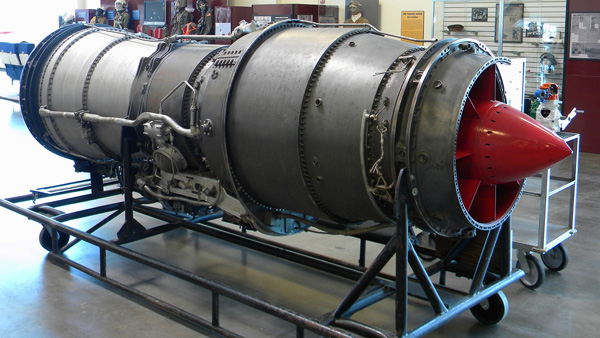 Above, a J57 turbojet core engine. |
|||
|
| |||
|
The J57 was a twin-spool 16-stage axial flow turbojet engine designed by Pratt & Whitney in the early 1950s and was the first American jet engine to produce more that 10,000 lbs. thrust. It was a big departure from the earlier centrifugal-flow engines and a substantial leap in axial-flow engine technology. The engine was a huge success and was produced from 1951 to 1965. It powered a range of aircraft that included the F-100 Super Sabre, Convair F-102 Delta Dart,
Lockheed U-2,
Republic F-105 prototype, an expiremental
Boeing B-47B and Northrop's Snark intercontinental guided missile.
There were two derviatives of the J57; the smaller J52 and larger J75. The J52 commercial version was the JT8 which powered the 727 and DC-9. The J75 commercial version was the JT4 that powered the early international versions of the Boeing 707 and Douglas DC-8. | |||
| The original J57 was a pure turbojet but was later modified to include a low bypass fan section that was designated as the the JT3D for commercial versions and TF33 for the military. The JT3D powered commercial Boeing 707s and some Douglas DC-8s. The JT3D also powered the Boeing KC-135E Stratotanker and Boeing B-52H Stratofortress. The JT3 made its first flight on a American Airlines Boeing 707-123B on March 12, 1961. |
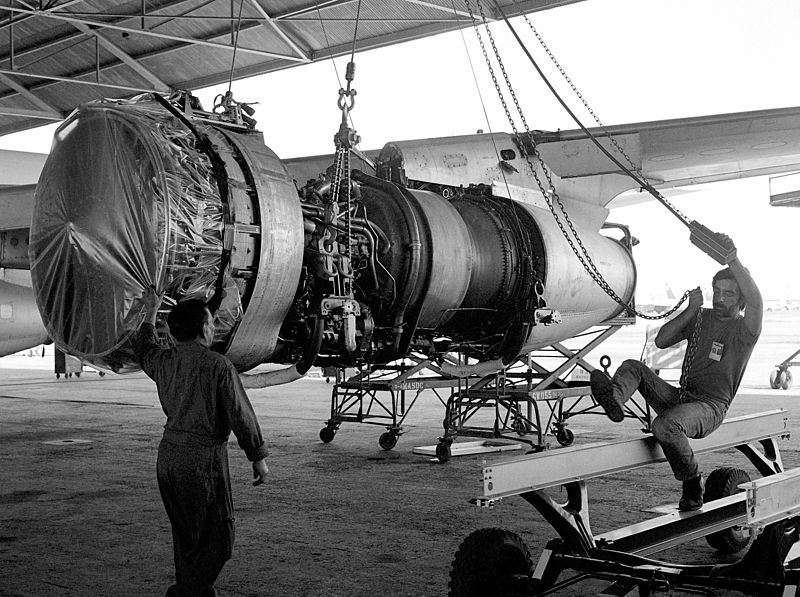 Above, a JT3D fan engine. |
|||
|
On military B-52s and KC-135s, the J57 was available with water injection to increase the take-off rated thrust. Water injection could be used for the initial two minutes of take-off using demineralized water. Water injection was also used in the early commercial Boeing 707s as the JT3C and these aircraft were often referred to as “Water Wagons.” In October 1958, the a larger J75 or commercial JT4, brought American passengers into the commercial jet age with the inaugural flight of a Pan American World Airways Boeing 707 from New York to Paris. Four JT4s, rated at 13,000 pounds of thrust, reached a cruising speed of 575 mph. This was 145 mph faster than the 430 mph cruising speed of the Lockheed Super Constellation which was one of the fastest propeller-driven airliners of that time. |
|||
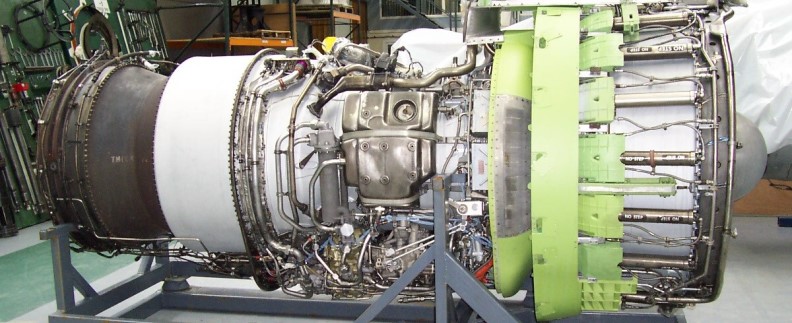
Above, a JT3D fan engine. The green section is the forward fan thrust reverser sleeve and blocker doors. |
|||
|
The J57 was a very durable engine, however it was very noisy. A heavy weight KC-135A using water injection was the loudest airplane in the USAF inventory and during a wet takeoff it generated up to 165 db. In 1952, the J57 won the prestigious Collier Trophy for greatest achievement in American aviation. The engine was upgraded steadily to achieve higher thrust levels and the most powerful model developed 19,600 pounds of thrust with afterburner. A total of 21,186 J57s cores were built for military and commercial applications. |
|||
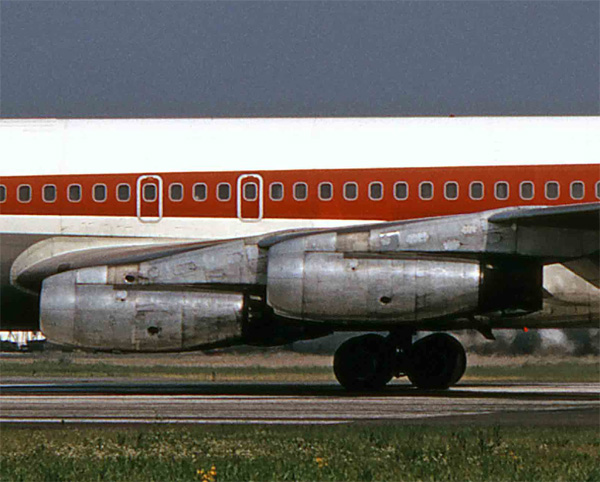
Above, a JT4 (J75) turbojet engine with cowling. 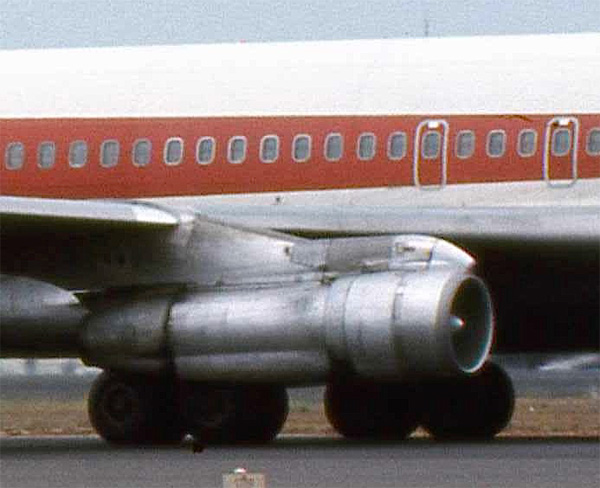
Above, a JT3D (J57) low bypass, turbofan engine with cowling. 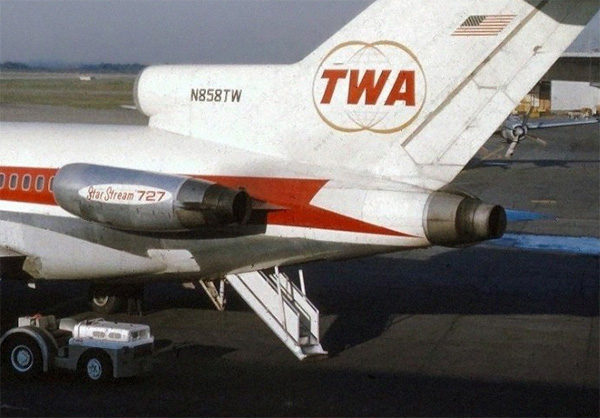
Above, a JT8 (J52) low bypass, ducted turbofan engine with cowling. | |||
| Specifications: | J57 | Date: | 1951 | Type: | Turbojet with optional afterburner |
|---|---|
| Compressor: | Two-spool 16-stage axial compressor |
| Length: | 244 in (6,200 mm) |
| Diameter: | 39 in (1,000 mm) |
| Thrust: | 11,700 lbf (52.0 kN) dry, 17,200 lbf (76.5 kN) with afterburner. |
| Dry Weight: | 5,175 lb (2,347 kg) |
© Larry Dwyer. The Aviation History On-Line Museum. All rights reserved.
Created March 21, 2013. Updated October 12, 2013.